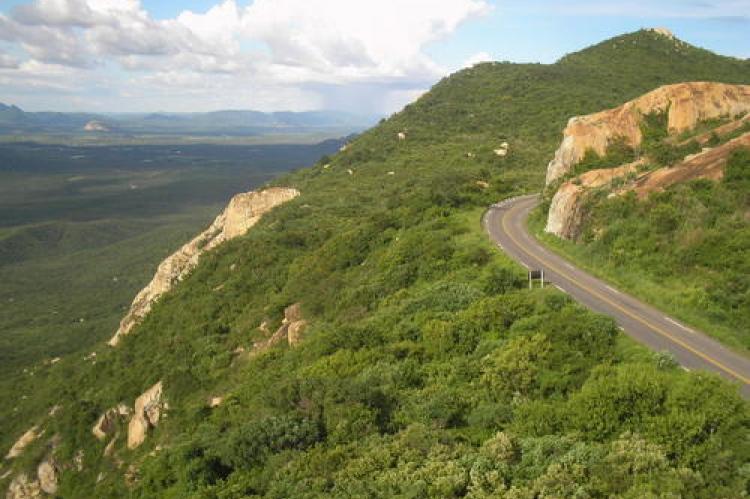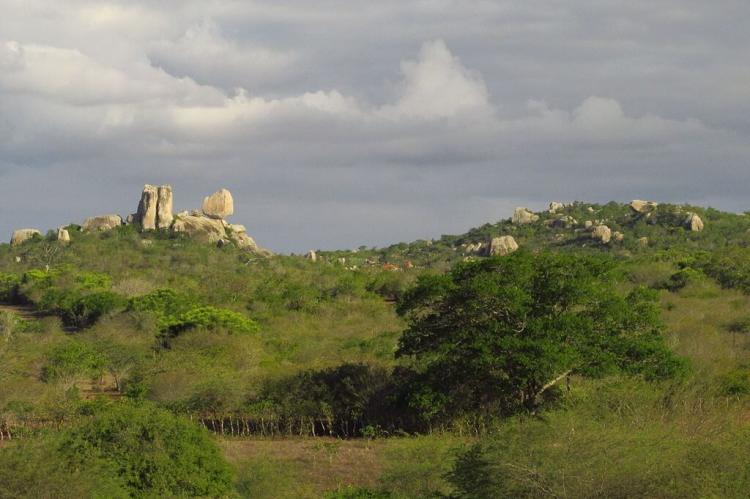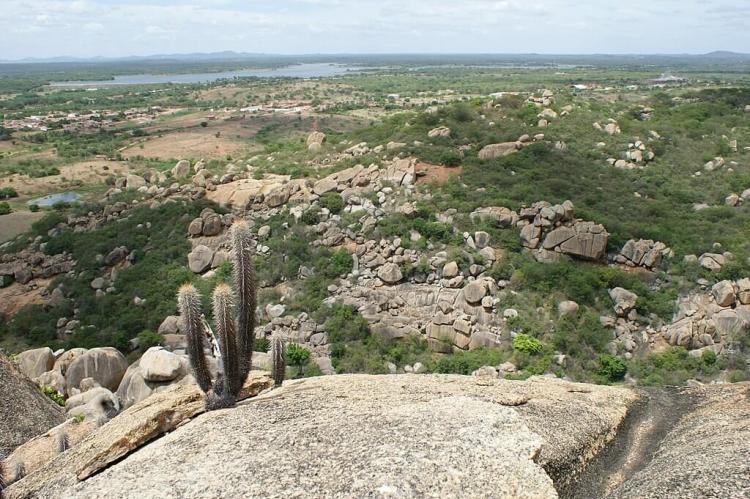Borborema Plateau (Brazil)
The Borborema Plateau makes up the northeasternmost portion of the Brazilian Highlands. As the primary watershed of the region, the semiarid plateau, composed mainly of mountains, is the source of more than 100 rivers and is rich in mineral deposits, including gold.
Borborema Plateau
The Borborema Plateau, also known as Serra da Borborema (Borborema Mountains), is the northeasternmost portion of the Brazilian Highlands. The plateau is composed mainly of mountains and extends through Alagoas, Pernambuco, Paraíba, and Rio Grande do Norte in northeastern Brazil.
The plateau, which extends approximately 400 km (250 mi) north to south and 200 km (120 mi) east to west, serves as an orographic barrier against the moist winds of the Atlantic Ocean. Therefore, the areas west of the plateau are arid and drought-prone.
The Borborema Plateau is a semiarid region known as the Caatinga, a xeric shrubland and thorn forest that consists primarily of small, thorny trees that shed their leaves seasonally.
The primary watershed of the region, the plateau is the source of more than 100 rivers, including the Moxotó, Mundaú, Paraíba do Norte, Seridó, and Una. The Pajeú River, the largest tributary of the São Francisco River, also originates here.
The most important cities located on the plateau are:
-
Campina Grande and Itabaiana in Paraíba state
-
Caruaru and Garanhuns in Pernambuco state
-
Arapiraca and Palmiera do Índios in Alagoas state
-
Santa Cruz in Rio Grande do Norte state
The plateau is rich in mineral deposits, including gold. It has an average altitude of 500 m (1,640 ft) and contains peaks reaching 1,200 m (3,937 ft).
Some studies attribute the origins of the Borborema Plateau to weather effects. Other works attribute the origins of the plateau to geological processes that occurred in the Cretacean period, between 65 and 136 million years ago.
A newer theory is that the uplift of the Borborema may be a consequence of magmatic activity and a deep thermal anomaly that would have started around 30 million years ago and caused the region to rise, leading to the formation of the plateau.


